EVA #003
Author: BHARTI SHARMA
Purpose of EVA: To collect samples for biology experiments and conduct field research for geology.
Start time: 14:00
End time: 16:30
Narrative: Desert weather dances to its whims, where unpredictability is woven into the shifting sands of the sky. We were all set for the EVA but unfortunately, the strong winds of the desert made it postponed as communicating via radio would have been difficult in this weather. But we haven’t lost any hope, we are looking forward to conducting the EVA tomorrow.
Destination: Cowboy Corner – 518547, 4253056
Coordinates (use UTM WGS 84): 518547, 4253056
Participants: Bharti, Daniel, Aditya and Rajvi
Road(s) and routes per MDRS Map: NA – EVA postponed
Mode of travel: NA – EVA was postponed
Astronomy Report – February 7th
[category
astronomy-report]
Name: Aditya Krishna Karigiri Madhusudan
Crew: 292
Date: 07/02/2024
MDRS ROBOTIC OBSERVATORY
Robotic Telescope Requested: MDRS-WF
Objects to be Imaged this Evening: NGC 5904 Globular Cluster. Observation submitted in Skynet on 07/02/2024 at 4:37 pm
Images submitted with this report: None
Problems Encountered: None
Additional Notes:
Please find the photometry details of AG DRA in V filter with exposure durations of 60, 90, 120, and 150 seconds.
I’ve attached the chart from AAVSO, seeing profile graphs and photometry images below for you to look over. Exposures with 120 and 150 seconds seem to oversaturate the target comparison and check stars. I believe the one with 90 seconds performs well and can set the exposures in B and R filters based on this!
Crew Photos – February 6th
Sol Summary – February 6th
Sol: Sol #2
Summary Title: Training and raining – the rain, the rain, (and we have only just begun our work).
Author’s name: Annalea Beattie
Mission Status: Nominal
Sol Activity Summary: Today we ate breakfast together and were ready for our training EVA’S well ahead of time. We were all there to help each other with the necessary preparation tasks of the EVA – to dress efficiently and comfortably in the space suits, to be completely at ease with the communication equipment as well as to be able to drive the electric rovers to our destination and move about in the field whilst wearing the space suits. We split into two groups and two separate EVAS to Marble Ritual. Both excursions were very successful and well time-managed despite a costume malfunction (mine) and drizzling rain which has now become intense. The rain is cramping our EVA ambitions. After the second training EVA, today we met at four to discuss and share our research goals and to determine the science directions for the next few days. We discussed everyone’s research and talked about what each of us needs next, and what we can do to assist. We talked about the future, about Ladakh and plans to build an analogue research station, an observatory and a green hab there. We talked about our initial impressions of MDRS. Our microbiologist Daniel Loy and geologist Bharti Sharma contacted Science Director and MSA president geologist Dr. Jon Clarke for more advice about where to go for gypsum sites within the range of the rovers. My feeling is that overall the crew is working well together. Our health is good. We are fit and sleeping and eating well. Fingers crossed that the rain will cease and we can go out in the field.
Look Ahead Plan: An EVA tomorrow for four crew to do slope analysis and find gypsum samples. A day at home in the hab for the rest of the crew with work here to do.
Anomalies in work: Nothing to report.
Weather: Cool start to the morning with 30 degrees F at seven am and humidity at 81%. High cloud cover all day and a slight wind with the temperature rising to 49F. Rain began at about 2.30 pm with drizzle then pouring, temperatures dropping quickly and high winds expected.
Crew Physical Status: Nominal
EVA: Training EVA #1 today to Marble Ritual at 10.30am with Mehanz, Rajvi, Clare and Aditya. Training EVA # 2 to Marble Ritual at 1.45 with Bharti, Daniel and me, Annalea.
Reports to be filed: Sol Summary, Journalist Report, Greenhab Report, Operations Report, EVA report, Astronomy Report
EVA Request(s): EVA with Bharti, Daniel, Aditya and Rajvi. Leaving at 2pm to Cowboy Corner in search of gypsum samples as well as slope analysis.
Support Requested: None
Operations Report – February 6th
SOL: #2
Name of person filing report: Rajvi Patel
Non-nominal systems: None
Notes on non-nominal systems: None
ROVERS
Spirit rover used: EVA #1
Hours: 245.5
Beginning charge: 100%
Ending charge: 68% (On return from EVA, before recharging)
Currently charging: No
Opportunity rover used: EVA #1
Hours:160.5
Beginning charge:100%
Ending charge: 78%
Currently charging: No because of the rain
The duration for EVA #1 was 1 hour 20 minutes.
Curiosity rover used: EVA#2
Hours: 265.7
Beginning charge: 100%
Ending charge: 85%
Currently charging: No because of the rain
Perseverance rover used: EVA#2
Hours: 283.6
Beginning charge: 100%
Ending charge: 75%
Currently charging: No because of the rain
EVA #2 was aborted after 1 hour and 5 minutes due to rain. The crew returned to the Hab safely.
General notes on rovers:
Summary of Hab operations:
WATER USE: 23 gallons
Water (static tank): 309.37 gallons
Static tank pipe heater (on or off): ON
Static tank heater (On or off): ON
Toilet tank emptied: no
Summary of Internet: Nominal
Summary of suits and radios:
– Space suits #2, #6, #5, and #9 were used for EVA #1. Suits and Radios for EVA had no issues.
– Space Suits #1, #3, and #7 were used for EVA #2. Suits and Radios for EVA #2 had no issues.
– COMMS kit #1 radio harness holder pocket is coming loose. Will be re-sewed.
Summary of GreenHab operations: put notes here
WATER USE: 17 gallons
Heater: On
Supplemental light: From 22:00 to 02:20
Harvest: 83 grams (cherry tomatoes)
Summary of Science Dome operations: put notes here.
Dual split: Heat ON
Summary of RAM operations: (Tools used, work done) put notes here
Summary of any observatory issues:
– None. The observatory was accessed at 2:05 pm for the initial check and sending initial pictures to Peter Detterline.
Summary of health and safety issues: None
Questions, concerns, and requests to Mission Support: put notes here.
– All Hab doors are secured properly as per the weather forecast from Mission Support.
– Checked for tennis balls on the fence and zip ties on tarps for tarp safety:
HAB to RAM:
· 2 zip ties missing due to the torn holes used for zip ties. Was thinking of making another hole a little further from that location and securing it using a zip tie.
· The bottom tarp of the overlapping tarp section needs to be secured (I would recommend at least three points). Need advice from Mission Support
· A small hole was detected in the tarp. Is any action required? Does the mission support want me to put a tape on it?
HAB to Green Hab:
· 2 locations were found that need to be secured using zip ties. Will use the zip ties to secure them.
· A small hole was detected in the tarp near Green Hab. Is any action required?
Green Hab to Science Dome:
· 4 locations were found to be secured using zip ties. Will use the zip ties to secure them.
Science Dome to Observatory:
· 2 locations were found to be secured using tennis balls. Need tennis balls for it?
· 3 locations were found to be secured using zip ties. Will use the zip ties to secure them.
Journalist Report – February 6th
Sol 2: Learning to Walk
Sol 2 started out a little dreary – fog covered the Henry Mountains and clouds blocked the crew from watching the sunrise. Our morning started slowly as we were all easing into life in the Hab and on Mars. As the day warmed up (albeit only slightly), we started to get ready for our first EVA on Mars.
Our first EVA consisted of Aditya, Mehnaz, Rajvi, and myself (Clare), and we drove out to the usual training ground of Marble Ritual. While we did enjoy looking at the rocks there and learning to walk and hike up hills in our suits, a few of us felt that our suits hadn’t been fitted quite right (despite the time taken to try fitting them prior to our EVA), and so we returned ten minutes early.
The others back at the Hab had cooked another delicious lunch while we were on our EVA (including bread we had put on in the morning). After this, it was time for the other crew members to start fitting their suits prior to going on their training EVA. Annalea, Bharti, and Daniel managed to fit their suits quickly, so they waited and took photos before their EVA start time. However, the weather had been closing in and it started to rain, so Mission Support advised us to postpone our second EVA.
By 1325 the weather had cleared enough that the second EVA crew was able to get ready to go on their EVA. They all quickly put on their suits and jumped in the airlock, ready for their journey to Marble Ritual. Despite a few wardrobe malfunctions, the EVA crew spotted several things worth investigating such as lichens and concretions. They even spotted some extra-Martian life (Earthling tourists) taking photos of our Hab from the designated photo point. Sadly, the rain came back, forcing the second EVA crew to return early.
Our afternoon was spent looking at the pictures we took preparing for and during our EVAs, writing reports, and listening to the quite pitter-patter of rain on the Hab roof. We also had a crew science meeting to help us all better understand each other’s projects and begin to plan our EVAs.
This evening has been greatly brightened with the harvest of sixteen(!) tomatoes that we have eaten as a pre-dinner snack. Thanks, Mehnaz, for harvesting and thanks to the previous GreenHab officer(s) for their efforts growing the tomatoes. The Mangalyatri Crew are all getting rumbly tummies with the delicious smells of dinner – thanks, Aditya and Rajvi!
Hungry for dinner and fieldwork,
Clare Fletcher (292 Mangalyatri journalist)
GreenHab Report – February 6th
GreenHab Officer: Mehnaz Jabeen
Environmental control:
8:06 am heater off, fan off, door closed
8:13: heater off, fan off, door closed
8:16: heater on, fan off, door closed
17:29: heater on, fan off, door closed
17:40: heater on, fan off, door closed
17:41: heater off, fan off, door closed
Average temperatures:
8:06: 73.9 F, 22%
17:29: 72.0 F, 40%
17:52: 72.1 F, 37%
Hours of supplemental light: 22:00-02:00
Daily water usage for crops: 17 gallons
Daily water usage for research and/or other purposes: 0 gallons
Water in Blue Tank (200 gallon capacity): 175 gallons
Time(s) of watering for crops: 8:10, 17:38
Changes to crops: Moisture levels
Narrative: Today I went to the GreenHab in the morning and checked the moisture levels for each crop. Moisture levels for the crops are as followed:
Oregano, Cucumber, Basil, Sage, Dilli, Cilantro : 40-50%.
Parsely, Raddish, Cucumber in different Pot,Mint, Carrots, Tomatoes : 20-30%.
Macche, Lambs Lettuce, Corn Salad: 50-60%.
Followed by checking the moisture levels I watered the crops according to how dry they were. The weather forecast seemed low and cooler so I decided not to mist the plants in the afternoon since I used enough water for the plants. By the evening around 5:26 I left the Hab to check the status of the GreenHab and once again repeated the same procedure of checking the moisture levels. The readings are as followed:
Oregano, Cucumber, Basil, Sage, Dilli, Cilantro : 70-80%.
Parsely, Raddish, Cucumber in different Pot,Mint, Carrots, Tomatoes : 40-60%.
Macche, Lambs Lettuce, Corn Salad: 70-80%.
Subsequently I watered the plants evenly using 2 teaspoons of chemical fertilizer, namely miracle in 4 gallons of water. The heater and fan turned on and off two times at different timings while I was present. Lastly I checked the ripened tomatoes and realized they were good for harvest. So I harvested 16 tomatoes from different pots of tomatoes and took them to the hab for dinner after measuring them.
Harvest: (Tomatoes : 83 grams)
Support/supplies needed: Zucchini seeds
EVA Report – February 6th
EVA #001
Author: BHARTI SHARMA
Purpose of EVA: Training EVA
Start time: 10:30 AM
End time: 11:50 AM
Narrative: Our Crew Members Clare, Mehnaz, Rajvi and Aditya were all excited about their training EVA. Clare was the expert on this training EVA so she was helpful in the field. She was explaining the geology and Dos and Don’ts of EVA in the field like a leader. For her, the experience was great and fun to be back on the field in the spacesuit. Rajvi had an amazing time in the field, her suit was comfortable and she drove the rover as well in the suit and she was great in that. Aditya had an amazing experience too driving the rover in the suit and he is looking for more EVAs and to learn about geology. Mehnaz, being an expert rider and a driver had a splendid experience driving the rover in the suit, she felt like she is on Mars. She had an amazing time in the field, but later in the field, her suit was a bit uncomfortable. She felt strain in her neck and the crew aborted the mission and came back early. Their overall experience was great and they all are looking for more EVA missions.
Destination: Marble Ritual
Coordinates (use UTM WGS 84): 518500, 4251000
Participants: Clare, Rajvi, Aditya and Mehnaz
Road(s) and routes per MDRS Map: Exited the Hab through the main Air Lock, drove driveway to Cow Dung Road 0110 and reached the Marble Ritual, walked within the 300 m radius, hiked a little bit to get used to the space suit.
Mode of travel: Curiosity Rover and Spirit Rover, walked and hiked a little bit.
Bios, pictures and mission patch – February 5th
Clare Fletcher
Clare Fletcher (they/she) is a PhD candidate at the University of New South Wales’s Australian Centre for Astrobiology in Sydney, Australia. Their PhD focuses on exogeoconservation of Mars – understanding important geological sites and features, particularly potential evidence of life and palaeoenvironments, and how we can best protect them while allowing continued exploration of Mars. Clare has previously completed an MPhil which focused on creating a roadmap for the geoconservation of the oldest evidence of life on Earth – 3.5 Gya stromatolite fossils in the Pilbara region of Western Australia, which have been studied by space agencies in preparation for Mars missions such as Mars2020 Perseverance.
In Crew 292 Mangalyaatra Clare will undertake the role of Crew Journalist, utilising their experience as a science writer to convey the experiences of the crew and articulate the research they undertake. Clare is additionally undertaking research for their PhD while at the Mars Desert Research Station and is participating in both Crew 291 Expedition Boomerang 3 and Crew 292 Mangalyaatra. Over four weeks at the MDRS, Clare’s research for their PhD will seek to understand how humans impact the Mars environment over varying temporal and spatial scales. The key outcome of Clare’s time at the MDRS will be to create a method to determine in situ what astrobiological features need to be protected and how to best do that. The purpose of this study is to come up with a way for astronauts and mission teams to effectively consider exogeoconservation as they explore and sample, without necessitating extensive reconnaissance for every location or outcrop. No such studies have been conducted before, and there is currently no best practice for scientific sampling that takes into account the protection of vitally important study features on Mars while still allowing sampling.
Clare is a member of the Mars Society of Australia, the Australian Centre for Astrobiology, and the IAA Moon Farside Protection Permanent Committee. They have worked as a writer for SpaceAustralia.com and helped run social media accounts for the Australian Centre for Astrobiology. Clare has presented their work at the UN COPUOS Legal Subcommittee Meeting in 2023 and at various conferences across Australia. Clare also teaches courses in astrobiology and science communication at the University of New South Wales.
Annalea Beattie
Dr. Annalea Beattie is an artist who uses art as a methodology for thinking about how we might live together in the future on Mars. Her art practice is set on space science expeditions to extreme environments on Earth, those that have conditions analogous to other celestial bodies. This is her third trip to Utah. In her last rotation to the Mars Desert Research Station, Annalea was a crew member of the three-month space simulation and science mission Mars 160. On this rotation she will lead Crew 292.
Apart from this busy role, Annalea’s own art-based research will focus on environmental stewardship, exploring a politics of care through dialogue, reflection and making art. Through co-creation, art making will address the nuances and complexities of what constitutes a frontier environment, looking closely at concepts of ‘wilderness’ and ‘free’ space. With the aim of broadening our understanding of how we imprint onto worlds that are not our own, her project thinks through materials and making to develop an ethics of reciprocal responsibility, one that can be translated to elsewhere⎯to Ladakh⎯and when we travel off-Earth to Mars. This project will emphasise our collective responsibility to both the human and the nonhuman and the potential of art as a catalyst for change.
Annalea Beattie is a Director of Mars Society Australia and of the National Space Society of Australia. She has contributed to four Springer volumes on extra-terrestrial liberty, speculating through her art practice how art making can sustain and invigorate communities off-Earth. Annalea is Adjunct Professor at the Centre of Excellence in Astrobiology, Amity University, Mumbai. She is a member of the International Dark Sky Association and The Association of Mars Explorers.
Aditya Krishna Karigiri Madhusudhan
Aditya is currently pursuing his Master’s degree at McGill University in Canada, specializing in observational cosmology. His research focuses on studying dark energy via 21-cm intensity mapping using large radio interferometers. Prior to this, Aditya earned his B. Tech in Mechatronics engineering, cultivating expertise in robotics, machine learning, and electronics. He later followed his passion to explore the world of astrophysics by undertaking the visiting student position at Raman Research Institute, India. Aditya delved into the realm of radio astronomy, laying the foundation for his current exploration of the early universe at McGill.
As the crew executive officer and crew astronomer, Aditya is determined to foster a collaborative and efficient team environment. In his role as the Executive Officer, he is focused on ensuring smooth communication and coordination among crew members, optimizing workflow, and addressing any operational challenges that may arise during missions. As the designated crew astronomer, his central objective is to formulate comprehensive plans and effective strategies for the construction of an observatory in preparation for the upcoming analog station in India. In addition to this, his secondary objective is to make use of the MDRS Musk observatory to capture and analyse potential solar events which in turn will provide a deeper understanding of solar phenomena and its implications for space travel and exploration.
Using his expertise in radio astronomy, Aditya aims to set up a simple radio telescope to detect radio emissions from space objects. Radio waves can penetrate through various obstacles, such as dust clouds and gas, that can block visible light. They can be operated 24 hours a day and are not affected by weather conditions. Having a radio telescope complements the existing optical telescopes and can provide a deeper understanding of celestial objects across various regions of the electromagnetic spectrum.
Bharti Sharma
Bharti Sharma, an exceptional geologist and visionary behind AADYA – PLANETARY AND GEOSCIENCE RESEARCH, stands as a shining example of unwavering dedication to pushing the boundaries of geology. With a Bachelor’s in Earth Science from Amity University Haryana and Master’s in Geology from Doon University, Bharti has woven together a colorful tapestry of experiences in the GIS and Geoscience industries, research, and impactful roles as a Field Teaching Assistant. Her brainchild, AADYA, serves as a stronghold for Geotourism, Skill Development, Collaborative Research, and Geo-Consultancy, showcasing her immense passion as a geologist and a Geo-Space Entrepreneur, a term which has coined for herself.
Bharti’s passion for planetary geology grew significantly during her time as a Research and Field Teaching Assistant in Ladakh. This experience served as the starting point for her exploration of the mysteries surrounding celestial bodies. With a specialization in planetary analogue research, she skillfully identifies similarities between various celestial entities and Earth, delving into the complexities of their beginnings and development. Her unwavering dedication to the field of planetary geology establishes her as a pioneering figure, continuously advancing humanity’s knowledge of cosmic phenomena.
As the Science lead of MDRS CREW 292, her mission is to study the geological and geomorphological features of Utah, intricately linking them with the terrain of Leh and Mars. Equipped with field analysis and remote sensing techniques, her primary goal remains the comprehensive understanding of various terrestrial analogue sites, thus bridging the gap between Mars and Earth Geology.
As an enthusiastic member of Women in Space South Asia, Bharti actively promotes increased female participation in space science, fostering opportunities for aspiring space enthusiasts. Apart from her illustrious career in geology, Bharti finds solace and motivation in exploring various landscapes around the world, satisfying her innate curiosity about the diverse aspects of our planet.
Daniel Loy
Daniel Loy is a first year Astrobiology PhD student from the Open University (UK) who will be fulfilling the roles of Crew Biologist and Health and Safety Officer for Crew 292. In his PhD project he is investigating and characterising the microbial communities and their interactions with the host sediments of the Makgadikgadi Basin in Botswana. The Makgadikgadi contains several salt flats with conditions that are very similar to ancient Mars, so this research will also be used as an analogue for the Noachian-Hesperian transition in Mars’ early history.
As the Crew Biologist, Daniel’s project will focus on recovering and extracting DNA from halophiles and other extremophiles to investigate the functional and taxonomic diversity of salt deposits and other gathered samples. Daniel will build on the established foundation of the research conducted in previous analog missions at the MDRS through the application of cultivation-dependant techniques that he developed during his Masters research project on recovery of entombed halophiles from salt crystals to isolate cultures of halophile; growth experiments will then be used to identify the metabolic potential of these isolates.
Daniel will also develop, modify and employ field-appropriate cultivation-independent techniques; this will involve use of the Bento Lab, a portable centrifuge, gel station and PCR machine, in combination with Hot Start PCR polymerases, PCR primers for an array of biogeochemical cycling genes and the MoBio DNA extraction kit, which will be modified for application with reduced facilities. With this combination of equipment, Daniel will perform DNA extractions in the hab-unit with both his isolates and Utah Desert Samples collected under mission-simulated conditions. These DNA samples will then be screened for functional genes via PCR.
This combination of techniques will provide baseline of fundamental cultivation dependant (isolations) and cultivation independent techniques (DNA extraction and PCR) that are achievable under analog mission parameters. This will then form the methodological framework for training framework and protocols that could then be carried out by non-biologists for future crews, at the MDRS, the Ladakh research station site or other locations. These techniques also represent more low-cost and sustainable techniques that can be carried out long-term and do not depend on reagents with a short shelf life.
Daniel Loy is a Junior Officer with the Royal Naval Reserves in the UK alongside his current studentship. He has previously investigated halophiles during his Masters research project with a focus on entombing microorganisms in salt to study how rapidly they recover and grow once outside of the crystals.
Mehnaz Jabeen
Mehanz Jabeen trained as a Geoinformatics professional at The Energy and Resource Institute (TERI ) School of Advance Studies Leh. She is a member of the Ladakh Science Foundation. Her Geoinformatics is an interdisciplinary branch of science which deals with cartographic geovisualisation, GIS, Remote Sensing, Photogrammetry, spatial statistics, multivariate statistics and other advanced tools and techniques. She is able to contribute in all kinds of spatial analysis using different geospatial techniques, artificial intelligence & machine learning, generate maps and provide valuable contextual information to science and planning teams. Mehnaz is experienced in applying geospatial technologies to solve real world challenges in environmental, social and economic domains by acquisition of data, exploring, visualizing and analyzing various spatial data. In Utah she will primarily focus on the green hab. Her own interest is how we might combine traditional nomadic knowledge to establish a green house in Ladakh where natural vegetation grows and survives in winters when temperatures drop to minus 20 degrees.
Rajvi Patel
Mangalyaatra Crew Engineer Rajvi is an aerospace engineer at Kaleidoscope Innovation where she works on commercial aircrafts to make them safe to fly. She pursued her master’s in aerospace engineering from the University of Michigan Ann Arbor with a specialization in Space Systems working on satellites and space mission design. Prior to this, she worked at Raytheon Technologies in Bengaluru, India. During her journey in India, Vikram Sarabhai Community Science Centre (VASCSC) was her second home where she explored the world of science beyond the rigid framework of theoretical classes. Throughout her life, she has explored her passion for engineering by working with unmanned aerial vehicles (UAVs), aircrafts, robots, satellites, and spacecrafts. She loves to build things and make it work. She aspires to be a space explorer which drives her motivation for being on Crew 292.
Additionally, Rajvi has led multiple community initiatives like educating underprivileged kids and awareness activities for women empowerment. She co-led an international organization called Graduate Rackham International (GRIN) at the University of Michigan Ann Arbor. She also loves hiking, traveling, reading, doing yoga and swimming.
As a Crew Engineer on team Mangalyaatra, she will utilize her engineering expertise to routinely monitor the equipment used by the crew and repair them in case of systems failure. Her duty will include providing daily status reports for each piece of equipment. In addition to these responsibilities, she will conduct her research that primarily focuses on propellant production utilizing water-bearing minerals at the Mars Desert Research Station (MDRS), Utah. Utilizing such propellants could decrease the cost of interplanetary travel and prove to be an additional source of propellant for the space exploration crew.
Mission Plan – February 5th
MANGALYATRI Mission Plan
Mars Desert Research Station
Crew 292, February 4-17, 2024
Crew 292 Mangalyatri comprises of:
Bharti Sharma- Science lead and Crew Geologist.
Daniel Loy- Crew Biologist and Health and Safety Officer.
Clare Fletcher- Geoconservationist and Crew Journalist.
Mehnaz Jabeen- Geoinformatics specialist and Green Hab Officer
Rajvi Patel- Crew Engineer
Aditya Krishna Karigiri Madhusudhan- XO and Crew Astronomer.
Annalea Beattie- Artist in Residence and Crew Commander.
Outreach and on-the-ground crew:
Sakshi Sharma in Jaipur, India and Ilankuzhali Elavarasan in Texas, USA.
External Directors:
Dr. Jen Blank
Dr. Siddharth Pandey
Dr. Anushree Srivastava
Mangalyatri means ‘Mars Expeditioners’ or ‘Mars Crew’ in Hindi. Mangalyatri Crew 292 to the Mars Desert Research Station has a team mission focus on learning as much as we can about Mars analogues from the largest and longest running analogue research station in the world, with the aim of building a science desert research station in Ladakh. In other words, this mostly Indian national crew has a mission focus on what we can learn from one analogue station to build another.
Mangalyatri is fielded by Mars Society Australia. MSA has a long history of sending crews to the Mars Desert Research Station and we would like to build own station at Arkaroola one day with the support of the U.S Mars Society. In the last decade we have also worked with institutions in India such as the Centre of Excellence in Astrobiology, Amity University, Mumbai, Birbal Sahni Institute of Palaeobotany, Lucknow and more, at Mars analogue sites in India. We have fielded expeditions to sites like Lonar which is a basalt crater similar to that of Jezero, to one of the biggest salt deserts in the world, the Great Raan of Katchchh, and in the past few years we have jointly organised three consecutive expeditions to the high glacial deserts of Ladakh with the team from Amity University’s Centre of Excellence in Astrobiology.
In Utah our interdisciplinary MSA Crew 292 will consider the implications of what it means to live and work in simulation in a Mars-like environment, in a vast and ancient desert that is an actual geological Martian analogue. At the same time, overall, our team goals focus on what we can learn from the systems, science and science operations in Utah to apply this knowledge to future work in Ladakh.
Geologist Bharti Sharma is our Science lead and her mission is to study the geological and geomorphological features of Utah, intricately linking them with the terrain of Ladakh and Mars. Equipped with field analysis and remote sensing techniques, her primary goal remains the comprehensive understanding of terrestrial analogue sites, thus bridging the gap between Mars and Earth geology.
As our Crew Biologist, Daniel Loy’s project will focus on recovering and extracting DNA from halophiles and other extremophiles to investigate the functional and taxonomic diversity of salt deposits and other gathered samples. Importantly, Daniel will also develop, modify and employ field-appropriate cultivation-independent techniques to provide a baseline of fundamental cultivation dependant (isolations) and cultivation independent techniques (DNA extraction and PCR) that are achievable under analogue mission parameters. This will inform a methodological framework for training, and protocols that could then be carried out by non-biologists for future crews⎯at the MDRS, at the Ladakh research station site in the Himalayas or other locations. Daniel is also our Health and Safety Officer.
Clare Fletcher’s PhD focuses on exogeoconservation of Mars – understanding important geological sites and features, particularly potential evidence of life and palaeoenvironments, and how we can best protect them while allowing continued exploration of Mars. Clare is participating in both MSA Crew 291 Expedition Boomerang 3 and Crew 292 Mangalyatri. The key outcome of Clare’s time at the MDRS will be to create a method to determine in situ what astrobiological features need to be protected and how to best do that. The purpose of the study is to come up with a way for astronauts and mission teams to effectively consider exogeoconservation as they explore and sample, without necessitating extensive reconnaissance for every location or outcrop. In Crew 292 Mangalyatri Clare will also undertake the role of Crew Journalist.
As the designated crew astronomer, astrophysicist Aditya Krishna Karigiri Madhusudhan’s central objective is to formulate comprehensive plans and effective strategies for the construction of an observatory in preparation for the upcoming analogue station in India. In addition to this, his secondary objective is to make use of the MDRS Musk observatory to capture and analyse potential solar events which in turn will provide a deeper understanding of solar phenomena and its implications for space travel and exploration. Aditya is second in command and XO for this crew.
Rajvi Patel is our Crew Engineer. Her role is to keep all our general and particular systems in the hab, and the equipment inside and out, running and safe. Her duties will include providing daily status reports for each piece of equipment. In addition to these responsibilities, she will conduct research that primarily focuses on understanding propellant production utilizing water-bearing minerals at the Mars Desert Research Station (MDRS), Utah. Utilizing such propellants could decrease the cost of interplanetary travel and prove to be an additional source of propellant for the space exploration crew.
An active member of the Ladakh Science Foundation and a Geoinformatics professional, Mehnaz Jabeen is experienced in applying geospatial technologies to solve real world challenges in environmental, social and economic domains by acquisition of data, exploring, visualizing and analyzing various spatial data. In Utah she will take on the role of Green Hab Officer. Her own interest is how we might combine traditional nomadic knowledge to establish a greenhouse at our research station in Ladakh where natural vegetation grows and survives in winters when temperatures drop to minus 20 degrees. In Utah Mehnaz will explore the spatial and temporal variations of temperature, humidity and soil moisture to identify critical thermo-hydrological thresholds in the Green Hab, those that influence evapotranspiration dynamics. She will collect data and calculate actual and potential evapotranspiration through established equations, applying the Budyko curve to decipher the ecosystems response to altered temperature and humidity regimes. The outcome of her research will not only contribute to our fundamental understanding of controlled ecosystem dynamics but will also provide precise insights into optimizing temperature and humidity parameters for enhanced plant growth and resource management in artificial habitats, especially in Ladakh (India) with extreme climate conditions and Mars like terrain.
Dr. Annalea Beattie is Crew Commander and artist for Mangalyatri 292. Annalea’s own art-based research will focus on environmental stewardship, exploring a politics of care through dialogue, reflection and making art. Through co-creation, art making will address the nuances and complexities of what constitutes a frontier environment, looking closely at concepts of ‘wilderness’ and ‘free’ space. The crew of Mangalyatri will be given their own art materials and sketchbooks. They will be invited to think laterally, to search for alternative knowledge through drawing and writing as they begin to recognise something of their own unique position in the vast landscape of the desert. This project aims to broaden understanding of how we imprint onto worlds that are not our own. Our team will be encouraged to develop an ethics of reciprocal responsibility, one that can be translated to elsewhere⎯to Ladakh⎯and when we travel off-Earth to Mars.
In terms of outreach to India, during the second week of our rotation our crew will join online with Amity University’s Centre of Excellence in Astrobiology Mumbai, in conversation with the very first cohort of postgraduate astrobiology students in India. For this live event we will be joined by members of Women in Space South Asia, an organisation which emerged from our Ladakhi expeditions in 2021and is supported by Mars Society Australia. Three of our crew are founding members of Women in Space South Asia including Sakshi Sharma who is our outreach person on the ground in India. With our partners in India, our team goal is to learn as much as we can from our experiences in Utah and apply that knowledge in Ladakh – to ensure the significance of astrobiological and analogue research studies, especially in relation to Mars.


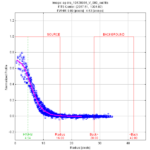
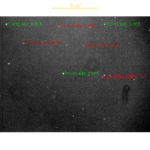
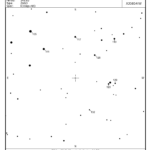
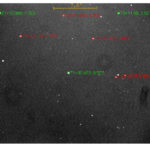
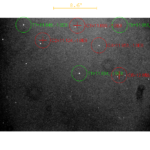
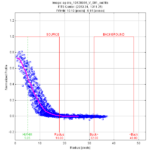
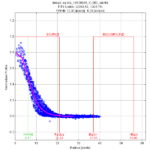
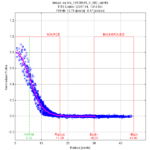
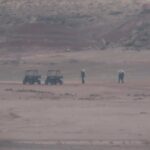
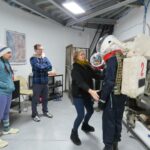
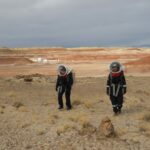

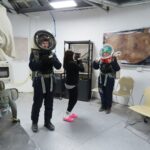
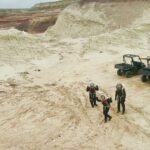






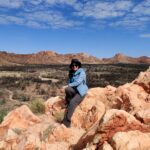
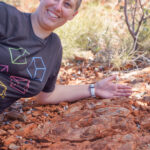

You must be logged in to post a comment.